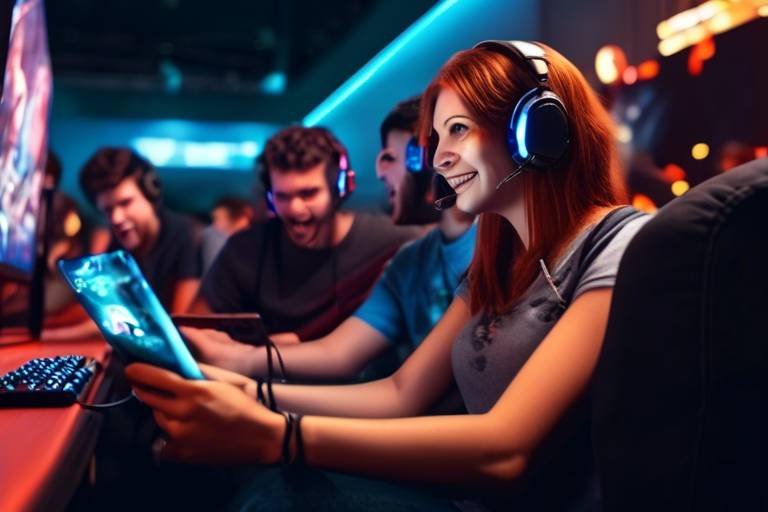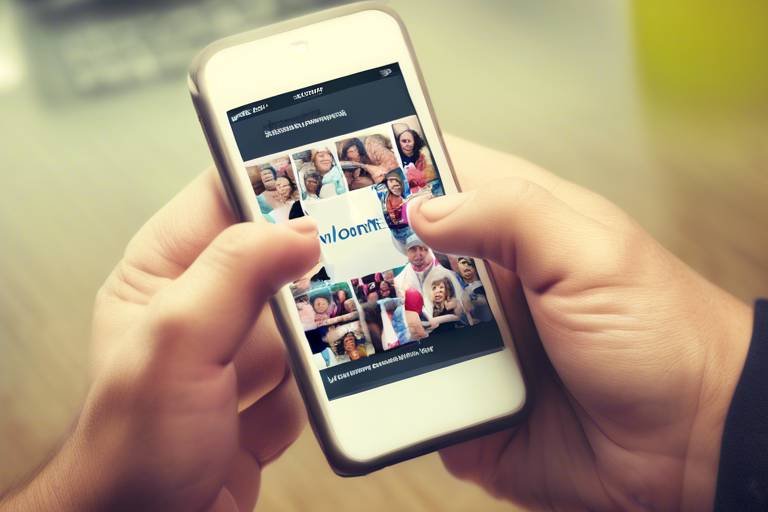The Influence of E-learning on Traditional Education
In recent years, e-learning has emerged as a transformative force in the educational landscape, reshaping the way we think about and engage with learning. Imagine a world where students can access knowledge at their fingertips, where geographical barriers dissolve, and where learning becomes a personalized journey tailored to individual needs. This is not just a dream; it’s the reality that e-learning brings to the table. The integration of digital tools and platforms has not only enhanced accessibility but also revolutionized the engagement and personalization of the learning experience. As we delve deeper into this topic, we will explore the myriad ways in which e-learning complements traditional education, making it more effective and inclusive for a diverse range of learners.
One of the most significant impacts of e-learning is its ability to cater to various learning styles. Traditional education often follows a one-size-fits-all model, which can leave many students feeling disconnected or overwhelmed. With e-learning, students have the flexibility to choose how they learn best—whether through videos, interactive quizzes, or collaborative online discussions. This adaptability fosters a more engaging and effective learning environment, encouraging students to take an active role in their education. Additionally, the rise of mobile learning means that education is no longer confined to the classroom; students can learn anywhere, anytime, thus accommodating their busy schedules and personal commitments.
However, the shift toward e-learning doesn’t come without its challenges. Traditional educational institutions face numerous hurdles in adapting to this new paradigm. For instance, many schools and universities are grappling with resource limitations, which can hinder their ability to implement effective e-learning solutions. Budget constraints often mean outdated materials and insufficient technology, creating an uneven playing field for students. Moreover, educators may struggle with technology integration, particularly if they lack the necessary training to utilize digital tools effectively. This gap can lead to ineffective teaching methods and diminished student engagement, ultimately undermining the potential benefits of e-learning.
Another challenge lies in the rigid curriculum structures that dominate traditional education systems. These inflexible frameworks can stifle creativity and limit students' opportunities to explore their interests. E-learning, on the other hand, offers the chance to break free from these constraints, allowing for a more dynamic and responsive educational experience. As we continue to explore the influence of e-learning on traditional education, it becomes increasingly clear that while challenges exist, the potential for enhancement and innovation is vast.
Ultimately, the integration of e-learning into traditional education can lead to a more engaged and motivated student body. The interactive content and multimedia resources associated with e-learning encourage active participation, fostering a deeper understanding of the subject matter. As we look toward the future, it’s essential to recognize that the synergy between traditional teaching methods and modern e-learning solutions can create a more holistic educational experience that meets the needs of all learners.
- What is e-learning? E-learning refers to the use of electronic technologies to access educational curriculum outside of a traditional classroom setting.
- How does e-learning benefit students? E-learning offers flexibility, accessibility, and personalized learning experiences, catering to diverse learning styles.
- What challenges does traditional education face? Traditional education often struggles with resource limitations, technology integration issues, and rigid curriculum structures.
- What is blended learning? Blended learning combines traditional face-to-face instruction with online components, creating a hybrid approach to education.
- How is the future of education evolving? The future of education is likely to see greater integration of e-learning solutions, transforming teaching and learning methods.

Benefits of E-learning
E-learning has revolutionized the educational landscape, offering a plethora of advantages that cater to the diverse needs of learners. One of the most significant benefits is flexibility. Unlike traditional classroom settings, e-learning allows students to access course materials anytime and anywhere, making it easier to balance studies with personal commitments. Imagine being able to learn from the comfort of your home, on your couch, or even while sipping coffee at your favorite café. This level of convenience is a game-changer for many!
Another remarkable aspect of e-learning is its accessibility. With just an internet connection, learners from various backgrounds can access a wealth of resources that were previously unavailable to them. This inclusivity ensures that education is not limited by geographical or economic barriers. For example, students in remote areas can now participate in courses offered by prestigious universities without the need to relocate. The digital age has truly opened up a world of opportunities!
Moreover, e-learning promotes a personalized learning experience. Every learner is unique, and e-learning platforms often provide tailored content that aligns with individual learning styles and paces. This customization can take many forms, such as:
- Interactive quizzes that adapt to a student's knowledge level
- Video lectures that can be paused and replayed as needed
- Discussion forums that encourage peer interaction and support
Such features help learners stay engaged and motivated, making the educational journey more enjoyable and effective.
Additionally, e-learning encourages the use of multimedia resources. By integrating videos, podcasts, infographics, and other engaging materials, educators can cater to various learning preferences. This variety not only captures students' attention but also enhances their understanding of complex concepts. For instance, a student struggling with a mathematical concept might benefit from a visual representation or a step-by-step video tutorial, which can clarify their doubts more effectively than traditional textbooks.
In summary, the benefits of e-learning are vast and transformative. From flexibility and accessibility to personalized learning experiences and the use of multimedia resources, e-learning is paving the way for a more inclusive and engaging educational environment. As we continue to embrace technology in education, the potential for further enhancing learning experiences is limitless. So, are you ready to explore the world of e-learning and unlock your full potential?
Q: What is e-learning?
A: E-learning is a method of education that utilizes electronic technology to access educational curriculum outside of a traditional classroom. It can include online courses, webinars, and multimedia resources.
Q: How does e-learning benefit students?
A: E-learning benefits students by providing flexibility, accessibility, and personalized learning experiences. It allows them to learn at their own pace and access a wide range of resources.
Q: Is e-learning effective?
A: Yes, numerous studies have shown that e-learning can be as effective, if not more so, than traditional classroom learning. It often leads to higher engagement and better retention of information.
Q: What technology do I need for e-learning?
A: Generally, you need a computer or tablet with internet access. Some courses may also require specific software or applications, but most platforms are designed to be user-friendly and accessible.

Challenges Faced by Traditional Education
Traditional education systems encounter various challenges that can hinder effective learning and teaching. One of the most pressing issues is the resource limitations faced by many educational institutions. Budget constraints often prevent schools from acquiring the latest materials and technology, leading to outdated resources that can stifle students' learning experiences. Imagine trying to learn about the latest scientific discoveries using textbooks that are years behind—frustrating, right? This lack of up-to-date resources diminishes student engagement and can create a disconnect between the curriculum and real-world applications.
Another significant obstacle is the rigid curriculum structures that many traditional education systems adhere to. These curriculums often lack the flexibility needed to adapt to individual student needs and learning styles. For instance, a student interested in diving deeper into a particular subject may find themselves restricted by a predetermined syllabus that doesn't allow for exploration. This rigidity can stifle creativity and limit students' ability to engage with material in a way that resonates with them personally.
Furthermore, the integration of technology in the classroom presents its own set of challenges. Many educators are untrained in using digital tools effectively, which can lead to ineffective teaching methods. When teachers struggle with technology, students often become disengaged, missing out on the interactive learning experiences that e-learning can provide. Consider a scenario where a teacher attempts to use a new educational app but lacks the skills to navigate it; the lesson can quickly turn into a frustrating experience for both the teacher and the students.
In addition to these issues, traditional education systems often operate on rigid schedules that do not accommodate the diverse needs of students. With fixed class times and a one-size-fits-all approach, students who may need more time to grasp certain concepts can fall behind. This can create a cycle of frustration and disengagement, further exacerbating the challenges faced by traditional education. To illustrate this point, consider a student who excels in mathematics but struggles with literature; under a rigid schedule, they may not receive the tailored support they need to thrive in both subjects.
These challenges highlight the urgent need for integrating e-learning solutions into traditional education. By addressing resource limitations, embracing flexible curriculum structures, and enhancing technology training for educators, we can create a more inclusive and effective learning environment for all students. After all, education should be a bridge to opportunity, not a barrier.
- What are the main challenges traditional education faces? Traditional education often struggles with resource limitations, rigid curriculum structures, and technology integration issues.
- How can e-learning help overcome these challenges? E-learning provides flexible, personalized learning experiences that can adapt to individual student needs, making education more engaging and effective.
- Is technology integration necessary for modern education? Yes, incorporating technology into education is crucial as it enhances learning experiences and prepares students for a tech-driven world.
- What role do teachers play in the success of e-learning? Educators are vital in implementing e-learning strategies effectively; their training and comfort with technology directly impact student engagement.

Resource Limitations
When we talk about in traditional education, it’s like trying to fill a swimming pool with a garden hose. While the intent is there, the flow just isn’t enough to meet the demand. Many educational institutions, especially those in underfunded areas, face significant budget constraints that inhibit their ability to provide the resources students need to thrive. Imagine a classroom where the textbooks are outdated, the technology is obsolete, and the facilities are in disrepair. This scenario is all too common and can severely impact students' learning experiences.
These constraints often translate into a lack of access to up-to-date materials and technology. For instance, students might find themselves using textbooks that are several years old, which can lead to a disconnect between what they learn in school and the current realities of the world outside. Furthermore, without access to modern technology, such as computers and reliable internet, students are missing out on the rich, interactive learning experiences that e-learning platforms can offer.
Moreover, the limitations don’t just stop at physical materials; they also extend to human resources. Many schools struggle to hire qualified teachers, particularly in specialized subjects like STEM (Science, Technology, Engineering, and Mathematics). This shortage can lead to larger class sizes, where teachers are overwhelmed and unable to provide the individualized attention that students desperately need. The result? A one-size-fits-all approach that leaves many students behind.
To illustrate this point further, consider the following table that highlights key resource limitations faced by traditional educational institutions:
| Resource Limitation | Impact on Students |
|---|---|
| Outdated Textbooks | Inability to learn current information and concepts. |
| Lack of Technology | Missed opportunities for interactive and engaging learning. |
| Insufficient Qualified Teachers | Larger class sizes and less individualized attention. |
| Poor Infrastructure | Distractions and discomfort that hinder the learning process. |
These challenges highlight the urgent need for integrating e-learning solutions into traditional education. By leveraging technology, schools can overcome some of these limitations, providing students with access to a wealth of resources that can enhance their learning experience. When students can engage with up-to-date materials and utilize interactive platforms, the gap created by resource limitations can begin to close, paving the way for a more equitable education system.
- What are the main resource limitations in traditional education?
Resource limitations include outdated textbooks, lack of technology, insufficient qualified teachers, and poor infrastructure, all of which can significantly impact student learning.
- How can e-learning help overcome these limitations?
E-learning provides access to up-to-date resources and interactive content, allowing students to engage with the material in a more meaningful way, regardless of the limitations of their physical classroom.
- What is the impact of large class sizes on education?
Large class sizes can lead to less individualized attention from teachers, making it harder for students to grasp complex concepts and receive the support they need.

Technology Integration Issues
Integrating technology into traditional education is like trying to fit a square peg into a round hole; it can be challenging, and often, the results are less than ideal. Many educators find themselves in a position where they are expected to utilize digital tools and platforms without adequate training or support. This gap in knowledge can lead to a variety of issues that hinder the effectiveness of teaching methods and diminish student engagement.
For instance, consider a teacher who is enthusiastic about using a new educational app but lacks the technical skills to navigate it effectively. This situation can create frustration not only for the teacher but also for the students who are eager to learn. When technology becomes a barrier rather than a bridge, it can stifle creativity and limit the opportunities for interactive learning experiences.
Additionally, the disparity in access to technology among students can exacerbate these integration issues. Not all students have the same level of access to devices or reliable internet connections. This digital divide can lead to inequalities in learning opportunities, where some students thrive in a tech-rich environment while others fall behind. It’s crucial for educational institutions to address these disparities to ensure that technology serves as an equalizer rather than a divider.
Moreover, there is often a lack of alignment between the curriculum and the technology being implemented. When educators are forced to use tools that do not complement their teaching objectives, it can lead to confusion and disengagement among students. For example, if a teacher uses a complex software program that doesn't align with the learning goals, students may feel overwhelmed rather than empowered. Thus, finding the right balance between technology and pedagogy is essential for successful integration.
To tackle these issues effectively, educational institutions need to:
- Provide comprehensive training for educators on the use of digital tools.
- Ensure equitable access to technology for all students.
- Align technology with curriculum goals to enhance learning outcomes.
By addressing these integration challenges, schools can create a more engaging and effective learning environment that harnesses the full potential of technology. Ultimately, the goal is not just to incorporate technology for the sake of it, but to enhance the educational experience and prepare students for a digital future.
- What are some common technology integration issues in education?
Common issues include lack of training for teachers, unequal access to technology among students, and misalignment between technology and curriculum goals. - How can schools improve technology integration?
Schools can improve integration by providing training for educators, ensuring equitable access to devices, and aligning technology tools with learning objectives. - Why is technology integration important in education?
Technology integration is important because it enhances student engagement, supports diverse learning styles, and prepares students for a technology-driven world.

Rigid Curriculum Structures
In the world of traditional education, one of the most significant hurdles is the rigid curriculum structure. Imagine trying to fit a square peg into a round hole; that's what many students experience when they are forced to conform to a standardized curriculum that doesn't cater to their unique learning needs. The traditional education system often operates on a strict timetable, dictating what students should learn and when, leaving little room for flexibility. This rigidity can stifle creativity and limit students' ability to explore subjects that genuinely interest them.
Moreover, the one-size-fits-all approach often results in disengagement among students. When learners are not allowed to pursue their passions or delve deeper into topics that fascinate them, they may feel like mere cogs in an educational machine. This can lead to a lack of motivation and a disconnection from the learning process. In contrast, e-learning and blended models provide a more adaptable framework, allowing students to take charge of their education.
To illustrate the impact of rigid curriculum structures, consider the following table that compares traditional education with e-learning approaches in terms of flexibility and engagement:
| Aspect | Traditional Education | E-learning Approaches |
|---|---|---|
| Flexibility | Limited; follows a strict schedule | High; allows for self-paced learning |
| Engagement | Passive; often lecture-based | Active; incorporates interactive elements |
| Customization | One-size-fits-all | Personalized learning paths |
As seen in the table, traditional education's limitations can hinder students' overall learning experiences. By integrating e-learning solutions, educators can create a more dynamic and engaging environment that fosters creativity and encourages students to explore their interests. The need for a more adaptable curriculum is clear, as it can significantly enhance students' motivation and success in their educational journeys.

Impact on Student Engagement
The rise of e-learning has significantly reshaped the landscape of student engagement in educational settings. Traditional classrooms often struggled to maintain students' attention, with lectures that could feel monotonous and uninspiring. However, e-learning introduces a dynamic and interactive environment that captivates learners in ways we never thought possible. Imagine a classroom where students are not just passive listeners but active participants in their own learning journey. This transformation is not just a fantasy; it's happening right now!
One of the key features of e-learning is the use of multimedia resources. By incorporating videos, animations, and interactive quizzes, educators can create a rich tapestry of learning experiences that appeal to various senses. For instance, a science lesson on the solar system can become a thrilling adventure when students can explore 3D models of planets or watch simulations of celestial events. This kind of engagement fosters a deeper understanding of complex concepts and encourages students to explore subjects beyond the surface level.
Moreover, e-learning platforms often include features that promote collaboration among students. Tools such as discussion boards, group projects, and peer reviews allow learners to connect with one another, share ideas, and provide feedback. This collaborative spirit not only enhances engagement but also builds a sense of community, which is vital for student motivation. When students feel they are part of a learning community, they are more likely to participate actively and take ownership of their education.
Furthermore, the flexibility of e-learning allows students to learn at their own pace. This personalized approach means that learners can revisit challenging material or accelerate through topics they grasp quickly. Such adaptability is crucial for maintaining engagement, as it respects individual learning styles and preferences. Students no longer have to conform to a rigid schedule that may not suit their needs; instead, they can tailor their learning experiences to fit their unique circumstances.
In summary, the impact of e-learning on student engagement is profound. By leveraging technology and innovative teaching methods, educators can create an environment that not only captures students' attention but also fosters a love for learning. As we continue to navigate this educational evolution, it’s essential to embrace the tools and techniques that make learning more engaging and effective for all students.
- How does e-learning improve student engagement?
E-learning enhances engagement through interactive content, multimedia resources, and opportunities for collaboration, allowing students to take an active role in their learning. - Can e-learning cater to different learning styles?
Yes! E-learning platforms often provide various formats, such as videos, quizzes, and readings, enabling students to choose the method that suits them best. - What are some challenges of e-learning?
While e-learning offers many benefits, challenges include the need for reliable technology, potential distractions at home, and the necessity for self-discipline among students.

Blended Learning Models
Blended learning is like a beautiful dance between traditional education and modern technology. It combines the best of both worlds, offering students the chance to engage in face-to-face interactions while also leveraging the vast resources available online. Imagine walking into a classroom where the teacher is not just a lecturer but a facilitator, guiding students through a mix of in-person discussions and virtual explorations. This hybrid approach not only enhances the learning experience but also caters to various learning preferences.
One of the most exciting aspects of blended learning is its flexibility. Students can enjoy the structure of classroom learning while having the freedom to explore topics at their own pace online. This flexibility allows learners to dive deeper into subjects that fascinate them, resulting in a more personalized educational journey. For instance, a student interested in environmental science can access a plethora of online resources, from documentaries to interactive simulations, all while collaborating with peers during classroom discussions.
Moreover, blended learning models can significantly enhance student engagement. With the integration of multimedia resources such as videos, podcasts, and interactive quizzes, students are more likely to participate actively in their learning. This shift from passive to active learning is crucial in today’s fast-paced world, where attention spans are shorter than ever. Imagine a classroom buzzing with energy, where students are not just listening but actively participating, asking questions, and collaborating on projects. This is the magic of blended learning!
To illustrate the various blended learning models, let’s take a look at the table below:
| Blended Learning Model | Description |
|---|---|
| Flipped Classroom | Students learn new content online at home and engage in collaborative activities during class time. |
| Rotation Model | Students rotate between different learning modalities, including online learning, group work, and teacher-led instruction. |
| Flex Model | Students learn primarily online but have access to in-person support as needed. |
In addition to these models, blended learning can also accommodate various instructional strategies. Teachers can utilize online platforms to assign projects, facilitate discussions, and provide feedback, all while maintaining the personal touch that face-to-face interaction offers. This combination of technology and traditional methods creates a rich tapestry of learning opportunities that can cater to diverse student needs.
As we look to the future, it's clear that blended learning will play a pivotal role in transforming education. By embracing this model, educators can create more engaging, effective, and personalized learning experiences for their students. Ultimately, the goal is to prepare learners not just for exams, but for life in a rapidly changing world.
- What is blended learning? Blended learning is an educational approach that combines traditional face-to-face classroom instruction with online learning activities.
- How does blended learning benefit students? It offers flexibility, promotes active engagement, and allows for personalized learning experiences.
- What are some examples of blended learning models? Examples include the flipped classroom, rotation model, and flex model.
- Can blended learning be implemented in all subjects? Yes, blended learning can be adapted to fit various subjects and learning environments.

Flipped Classroom Approach
The is revolutionizing the way we think about education, turning the traditional model on its head. Instead of the typical setup where students listen to lectures in class and do homework at home, this innovative method encourages students to engage with new material online before they even step foot in the classroom. Imagine coming to class, not to listen to a lecture, but to dive straight into discussions, group work, and problem-solving activities!
This method not only makes learning more interactive but also empowers students to take charge of their education. By watching lectures or engaging with content at their own pace, students can absorb information in a way that suits their individual learning styles. For instance, some might prefer watching videos, while others may benefit from reading articles or engaging in interactive simulations. The flexibility of the flipped classroom allows for all these options, making it a personalized learning experience.
Moreover, the flipped classroom model fosters a sense of community among students. When they come to class prepared, they're more likely to participate actively in discussions, share ideas, and collaborate with peers. This collaboration not only enhances their understanding of the subject matter but also builds essential skills like teamwork and communication, which are crucial in today's world.
However, implementing the flipped classroom approach does come with its own set of challenges. For instance, not all students may have access to the necessary technology at home, creating a potential gap in learning opportunities. Educators must be mindful of these disparities and strive to provide resources that ensure all students can participate fully. Additionally, teachers need to be well-prepared to facilitate discussions and activities that effectively build on the pre-class material.
In summary, the flipped classroom approach is more than just a trend; it's a transformative educational strategy that promotes active learning, collaboration, and personalized education. By flipping the traditional model, we can create a more engaging and effective learning environment that prepares students for the challenges of the future.
- What is a flipped classroom?
A flipped classroom is an instructional strategy where students learn new content at home, usually through videos or online resources, and engage in hands-on activities in the classroom. - What are the benefits of a flipped classroom?
Benefits include increased student engagement, personalized learning, and the opportunity for collaborative activities during class time. - What challenges might educators face?
Challenges include ensuring all students have access to technology at home and training teachers to effectively facilitate interactive sessions. - How can I implement a flipped classroom in my school?
Start by providing resources for students to access content at home, and plan class activities that promote discussion and collaboration.

Personalized Learning Paths
In the ever-evolving landscape of education, have emerged as a game-changer. Imagine a classroom where every student is not just a number but a unique learner with distinct interests, strengths, and challenges. This is the essence of personalized learning. With the integration of e-learning, educators can now tailor educational experiences to fit individual needs, making learning more engaging and effective.
One of the most exciting aspects of personalized learning paths is their ability to adapt to various learning styles. For instance, some students might grasp concepts better through visual aids, while others may prefer hands-on activities or auditory resources. E-learning platforms can provide a plethora of resources, allowing students to choose the methods that resonate with them the most. This flexibility is crucial, as it empowers learners to take charge of their education, fostering a sense of independence and motivation.
Moreover, personalized learning paths can significantly enhance the pace at which students progress. Traditional classrooms often operate on a fixed schedule, where all students are expected to learn the same material at the same speed. However, with e-learning, students can advance through content at their own pace. Those who grasp concepts quickly can move ahead, while those who need more time can revisit material without feeling pressured. This approach not only reduces anxiety but also promotes a deeper understanding of the subject matter.
To illustrate the impact of personalized learning paths, consider the following benefits:
- Increased Engagement: When students have a say in their learning journey, they are more likely to engage actively with the content.
- Improved Retention: Tailored paths allow students to revisit challenging concepts, leading to better retention and understanding.
- Enhanced Motivation: Personalization fosters a sense of ownership, motivating students to take responsibility for their learning.
As we look to the future, the potential of personalized learning paths is vast. With advancements in artificial intelligence and data analytics, educators will be able to create even more refined learning experiences. Imagine algorithms that analyze a student's performance in real-time and adjust the curriculum accordingly! This level of customization could revolutionize education, ensuring that every student receives the support they need to thrive.
In conclusion, personalized learning paths represent a significant shift in how we approach education. By leveraging the power of e-learning, we can create an environment where students are not just passive recipients of information but active participants in their learning journey. The future of education is bright, and personalized learning is at the forefront of this transformation.
1. What is personalized learning?
Personalized learning is an educational approach that tailors learning experiences to meet the individual needs, interests, and abilities of each student.
2. How does e-learning facilitate personalized learning?
E-learning platforms provide a variety of resources and tools that allow students to choose their learning paths, enabling them to progress at their own pace and style.
3. What are the benefits of personalized learning paths?
Personalized learning paths increase engagement, improve retention, and enhance motivation by allowing students to take control of their learning experiences.
4. Will personalized learning replace traditional education?
While personalized learning is transforming education, it is more likely to complement traditional methods rather than completely replace them, especially in blended learning environments.

Future Trends in Education
As we gaze into the crystal ball of education, it’s clear that the future is not just bright; it’s positively dazzling! The rapid evolution of technology is paving the way for a revolution in how we teach and learn. Imagine a world where artificial intelligence tailors lessons to fit each student's unique learning style, or where virtual reality immerses students in historical events as if they were actually there. The possibilities are endless, and they’re not just dreams; they’re becoming our reality!
One of the most exciting trends is the rise of adaptive learning technologies. These tools analyze student performance in real-time, adjusting the difficulty of tasks to match their individual needs. This means that no student is left behind, as the system can identify when someone is struggling and provide additional resources or alter the pace of lessons. It’s like having a personal tutor available 24/7, guiding each learner on their educational journey.
Moreover, we are witnessing the emergence of microlearning, which breaks down information into bite-sized chunks that are easier to digest. This approach caters to our increasingly busy lifestyles, allowing learners to engage with content in short, focused sessions. Think of it as snacking on knowledge instead of trying to consume a whole feast at once! This method not only enhances retention but also keeps learners motivated and engaged.
Another trend to watch is the integration of gamification in education. By incorporating game-like elements into learning, educators can boost student motivation and participation. Imagine earning points, badges, or rewards for completing assignments or participating in discussions. This playful approach transforms mundane tasks into exciting challenges, making learning feel less like a chore and more like an adventure.
Furthermore, the globalization of education is set to break down geographical barriers. With online platforms, students can connect with peers and educators from around the world, gaining diverse perspectives and insights. This not only enriches their learning experience but also prepares them for a globalized workforce. It’s like having a classroom that spans the entire globe, fostering collaboration and cultural exchange.
Lastly, we can’t overlook the importance of social-emotional learning (SEL) in the future of education. As we recognize the significance of mental health and emotional intelligence, schools are increasingly prioritizing SEL programs. These initiatives help students develop skills like empathy, resilience, and self-awareness, creating a more holistic approach to education. After all, a well-rounded education isn’t just about academics; it’s about nurturing the whole person.
In conclusion, the future of education is not just about technology; it’s about creating a more engaging, inclusive, and personalized learning experience for all students. As we embrace these trends, we can look forward to an educational landscape that is dynamic, exciting, and tailored to meet the needs of every learner.
- What is adaptive learning? Adaptive learning is a technology-based approach that customizes educational experiences based on individual student performance and learning styles.
- How does gamification enhance learning? Gamification incorporates game-like elements into educational activities, boosting motivation and engagement by making learning feel like a fun challenge.
- What is microlearning? Microlearning is a method of delivering content in small, easily digestible segments, making it more accessible and easier to retain.
- Why is social-emotional learning important? Social-emotional learning helps students develop essential life skills such as empathy, resilience, and self-awareness, contributing to their overall well-being and success.
Frequently Asked Questions
- What are the main benefits of e-learning compared to traditional education?
E-learning offers a range of benefits including flexibility, allowing students to learn at their own pace, and accessibility, enabling learners from various backgrounds to access educational resources. Additionally, it provides a personalized learning experience that caters to different learning styles, making education more inclusive and effective.
- What challenges does traditional education face that e-learning can address?
Traditional education often struggles with limited resources, such as outdated materials and technology, which can hinder student engagement. It also tends to have rigid curriculum structures that do not accommodate individual learning needs, making it difficult for students to explore their interests fully.
- How does e-learning impact student engagement?
E-learning significantly boosts student engagement through interactive content and multimedia resources. This shift encourages active participation, allowing students to dive deeper into the subject matter, fostering a more enriching learning experience.
- What is blended learning and how does it work?
Blended learning is a hybrid educational approach that combines traditional face-to-face instruction with online learning components. This model allows for greater flexibility and can enhance the overall learning experience by accommodating diverse learning preferences.
- Can you explain the flipped classroom model?
The flipped classroom model is an innovative approach where students learn new content online at home and then engage in collaborative activities during class time. This method promotes deeper understanding and critical thinking skills, as it shifts the focus from passive learning to active participation in the classroom.
- How does e-learning facilitate personalized learning paths?
E-learning allows educators to create personalized learning paths tailored to individual student needs. This customization enhances motivation, enabling learners to progress at their own pace and focus on areas where they need more support.
- What future trends can we expect in education regarding e-learning?
As technology continues to evolve, we can anticipate a greater integration of e-learning solutions in education. This transformation will likely change how we teach and learn, making education more adaptable and responsive to the needs of students in the years to come.



















